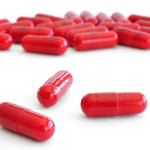Sometimes when we don’t feel well, it is very tempting to go and pop a few more Tylenol pills or Ibuprofen to help alleviate our symptoms. But federal health officials are warning consumers to be aware that many medications contain acetaminophen and you could be putting yourself in harm’s way if you take multiple drugs containing the painkiller or take more than the recommended daily dose.
In a consumer update posted by the FDA, the agency warns individuals to specifically not “double up” on flu medications, because so many of them contain acetaminophen. Doing so can potentially lead to an acetaminophen overdose, placing the liver at risk of severe injury that may result in the need for a transplant or cause death.
Acetaminophen is a common medication for relieving mild to moderate pain from headaches, muscle aches, menstrual periods, colds and sore throats, toothaches, backaches and to reduce fever. It is also used in combination medicines, which have more than one active ingredient to treat more than one symptom.
More than 600 medications, both prescription and over-the-counter, contain acetaminophen, the FDA warns. Quite often, particularly during the cold and flu season, consumers take multiple medications to alleviate symptoms without realizing how much acetaminophen they are actually taking.
Fathia Gibril, M.D., M.HSc., a supervisory medical officer at the Food and Drug Administration (FDA), explains that consumers looking for relief from a cold or the flu may not know that acetaminophen comes in combination with many other medications used to treat those symptoms. “So if you’re taking more than one medicine at a time,” she says, “you may be putting yourself at risk for liver damage.”
Signs of Acetaminophen Overdose
Symptoms of acetaminophen overdose may take many days to appear, and even when they become apparent, they may mimic flu or cold symptoms. The current maximum recommended adult dose of acetaminophen is 4,000 milligrams per day, to avoid exceeding that dose:
- don’t take more than one OTC product containing acetaminophen,
- don’t take a prescription and an OTC product containing acetaminophen, and
- don’t exceed the recommended dose on any product containing acetaminophen.
“When you’re at the store deciding which product to buy, check the ‘Drug Facts’ label of OTC cold, cough and flu products before using two or more products at the same time,” Gibril says. If you’re still not sure which to buy, ask the pharmacist for advice.
The FDA also recommends that consumers tell their doctor and pharmacist what other drugs they are taking when being prescribed medication or when buying it over-the counter, and to check the label and ask about acetaminophen in new drugs they begin taking. The FDA has published a list of brand name drugs that contain acetaminophen.
According to the FDA, acetaminophen toxicity is a leading cause of liver failure in the U.S., resulting in more than 50,000 emergency room visits, 25,000 hospitalizations and over 450 deaths annually. In a 2002 FDA advisory committee meeting, experts found that there were between 1,000 and 2,000 acetaminophen-induced liver failures each year.
In recent years, a growing number of individuals throughout the United States have filed an acetaminophen liver failure lawsuit against Johnson & Johnson, alleging that the drug maker failed to provide adequate warnings about the potential side effects of Tylenol, which is one of the leading pain medications in the world.
In July 2011, Johnson & Johnson announced that it was lowering the maximum recommended dosage on Tylenol and other acetaminophen-based products from 4,000 mg per day to 3,000 mg per day. The decision came after the FDA announced new limits on acetaminophen levels in prescription painkillers like Vicodin and Percocet. But over-the-counter painkillers and drugs with acetaminophen went unaffected.

